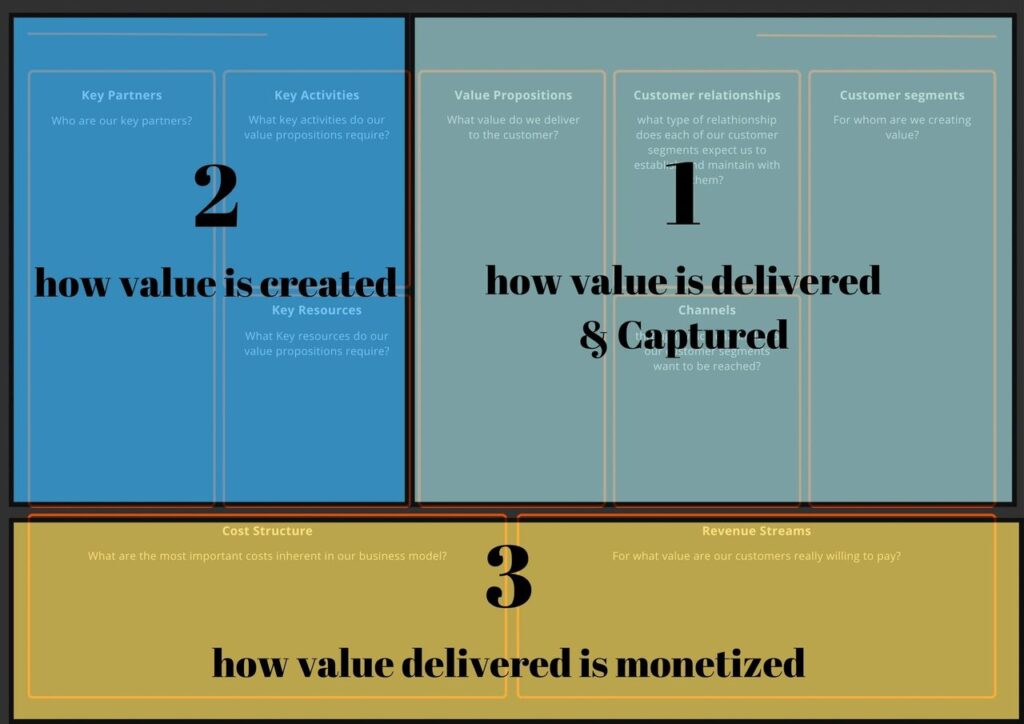Part 4 of 6 – recommended pre-requisite posts

With strategic goals in place, the next step is to design a new business model that aligns with these goals. This involves rethinking the value proposition, revenue streams, cost structures, service offerings, operational framework, and organizational structure. The objective is to create a business model that supports the firm’s vision and strategic objectives while addressing the challenges identified earlier.
One really great way is to use the Lean Canvas method. You can read more posts about the Lean Canvas on this link.

Identify Key Changes
Value Proposition: The value proposition defines what makes the firm unique and why clients should choose it over competitors. For boutique firms, this often revolves around personalized service, niche expertise, and strong client relationships. The new business model should refine and enhance this value proposition. For example, if sustainability is a core value, the firm might develop a unique approach to green building that differentiates it in the market.
Revenue Streams and Cost Structures: Innovating revenue streams is crucial for financial sustainability. Boutique firms often rely on project-based income, which can be unpredictable. Diversifying revenue streams can provide more stability. Options include offering consulting services, developing retainer agreements with key clients, or creating educational content such as workshops or online courses.
Cost structures should also be evaluated to identify potential savings and efficiencies. For instance, adopting digital tools can streamline operations and reduce administrative costs. Outsourcing non-core activities, such as marketing or IT support, can also be a cost-effective strategy.
Service Offerings: Firms can stay ahead of the curve by expanding their service offerings to meet evolving client needs and capitalize on new market opportunities. This might involve incorporating cutting-edge technologies or specializing in areas like sustainability consulting, interior design, or smart building solutions. By understanding client preferences and market trends, firms can prioritize the most valuable services to add to their repertoire.
Operational Framework
Process Redesign: To support the new business model, operational processes need to be redesigned for efficiency and effectiveness. This includes project management, client engagement, and internal workflows. Digital tools can play a significant role in process redesign. For example, project management software can improve collaboration and transparency, while Customer Relationship Management (CRM) systems can enhance client interactions.
Technology Integration: Integrating technology into the firm’s operations can drive efficiency and innovation. This might involve adopting BIM for design and documentation, using virtual reality for client presentations, or implementing cloud-based collaboration tools. Technology integration should be aligned with the firm’s strategic goals and tailored to its specific needs and capabilities.

Organizational Structure
Team Roles and Responsibilities: Redefining team roles and responsibilities is critical for supporting the new business model. This might involve creating new roles, such as a sustainability officer or a technology manager, to drive key initiatives. Clear communication of roles and responsibilities ensures accountability and facilitates smooth operations. Here is a post to read about Building a Resilient Architecture Team; Expertise and Staffing.
Leadership and Governance: Strong leadership is essential for guiding the change process. This means setting a clear direction, making strategic decisions, and fostering a culture of innovation and collaboration. Governance structures should support effective decision-making and ensure alignment with the firm’s strategic goals.
In summary, designing a new business model for boutique architecture firms involves rethinking the value proposition, revenue streams, cost structures, service offerings, operational framework, and organizational structure. By focusing on these key areas, firms can create a business model that supports their vision, addresses their challenges, and positions them for long-term success.
Next up: Implementation Planning in Part 5!
Note: Once all six parts are published, subscribers will receive a comprehensive guide that consolidates all the content into one book, including a workbook with questionnaires to aid the process of change. You can find the subscription link on the Home Page.
